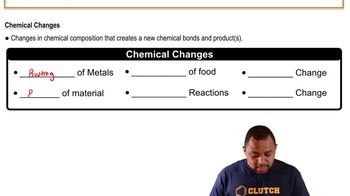Textbook Question
What type of change, physical or chemical, takes place in each of the following?
d. A puzzle is cut into 1000 pieces.
 Verified step by step guidance
Verified step by step guidance Verified video answer for a similar problem:
Verified video answer for a similar problem:



 1:41m
1:41mMaster Physical and Chemical Changes with a bite sized video explanation from Jules
Start learning